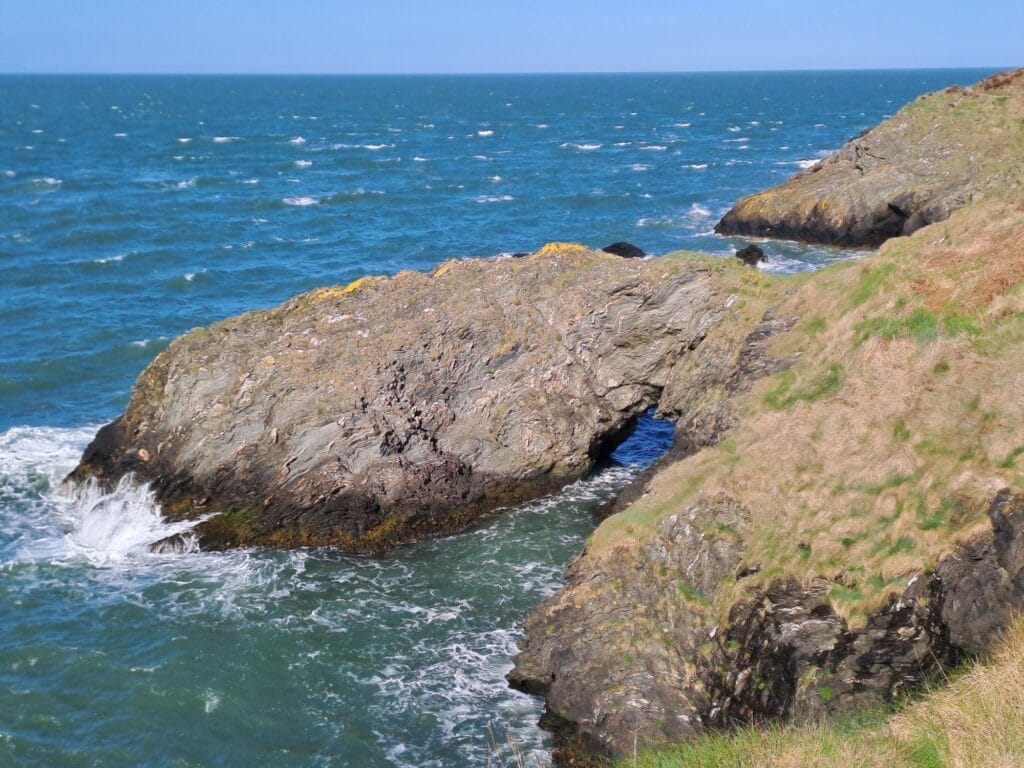Portugal’s climate and coastline lend themselves to some great walks. With great biodiversity and some quaint ancient villages, you have the pick of the bunch when it comes to scenic hikes. And, because of its density and strong public transport, it’s relatively easy to access each of them, no matter where you.
Hike 1: The spiritual journey
The Camino Portuguese Coastal Route is one of the most iconic segments of the wider Camino de Santiago. Among the many trails that Santiago Ways organises, there are two variations of this coastal route, each of which is around 130km. The path starting in Porto weaves through many coastal settlements, and if you know anything about Portuguese maritime history, these are some of the most strategically important places. Viana do Castelo and Vila Praia de Âncora are great stops, but be prepared for some windy shorelines depending on the time of year. Both coastal routes have a similar feel to them.
Hike 2: Rota Vicentina’s Fishermen’s Trail
You may have already heard of the Fishermen’s Trail. It’s a key part of the Rota Vicentina and is, once again, with Portugal, dominated by coastal hiking. The Alentejo and Algarve regions have some of the best-preserved coastlines. This single-track path is easy to follow, yet offers dramatic cliff edges and access to some very secluded beaches and coves that you otherwise wouldn’t know about. By going through diminutive fishing hamlets, you’ll begin to see diverse marine and avian species. Vicentine Coast Natural Park is spectacular, but don’t underestimate this one.
Hike 3: Grande Rota das Aldeias Históricas (GR22)
The Grande Rota das Aldeias Históricas (GR22) is a circular, but almost 600km long-distance trail that connects twelve of Portugal’s historically important villages (mostly situated in the Beira Interior region). This one is for the history buffs, as you head through medieval castles and fortified towns like Almeida, Belmonte and Monsanto. The GR22 requires a lot of preparation if undergoing the entirety of it, but it can be worth it for the Serra da Estrela Natural Park segment alone, providing it covers a bit of everything.
Hike 4: Tracing history from Lisbon
The Camino Portuguese Central Route is our final option for the famous pilgrimage walk in Portugal. Originating in Lisbon, the trail has a lot of spiritual significance. It begins by walking from Lisbon to Santarém which traces the Tagus River valley. The capital is a great place to experience on foot, but it can be freeing to leave as you head seamlessly into the pastoral countryside known as “The Garden of Portugal”.

Hike 5: Algarve’s charm
The Via Algarviana (GR13) is another long one at 300km. 90% of it is possible to complete with a mountain bike, as it heads through the southernmost region of the Algarve. You’ll see the spots that the tourists often miss as you head from Alcoutim on the border to Europe’s southwesternmost extremity, Cape St. Vincent. Parts can get pretty remote, but it’s worth it for the wild flora and rolling hills, which can feel different from other areas in the country.
Portugal is an extremely safe country. Its topography is diverse, yet closely knit. This makes it an ideal place to challenge yourself in a relatively controlled environment, where you can reach remote, unspoiled scenery without ever being too far from public transport or amenities.










